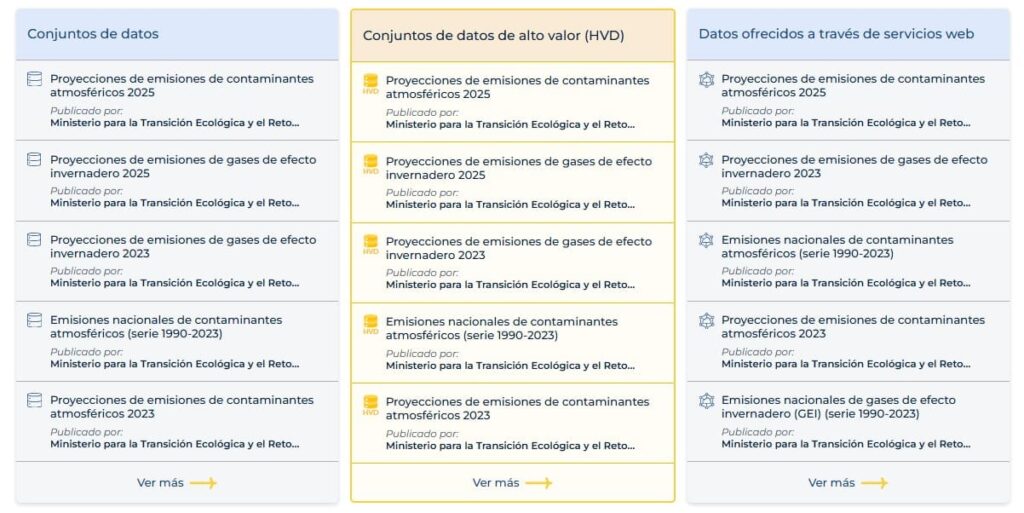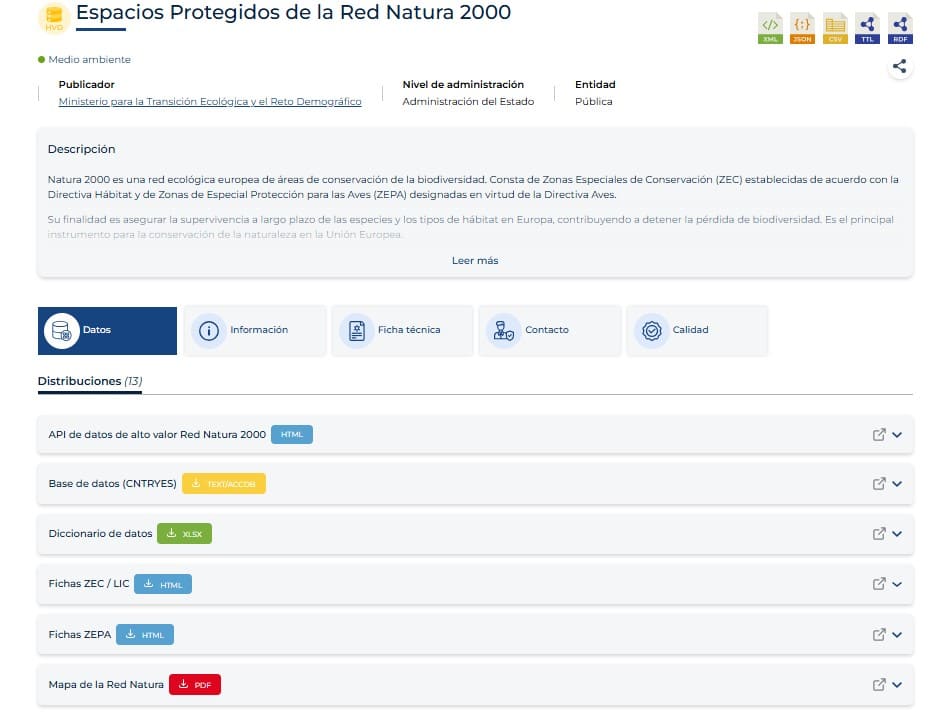Spain has taken a strategic step in the open data field with the new version of data.gob.es, the national portal that centralizes access to public administration datasets. The redesign is not just aesthetic: it introduces improvements in usability, information architecture, and alignment with European standards, making the platform a key component within the so-called data economy.
The National Open Data Catalog remains the nucleus of the initiative. With nearly 100,000 datasets and over 500,000 files, it is one of the most comprehensive repositories in Europe. The new version focuses on two particularly relevant areas: High Value Datasets (HVD) and resources accessible via web services and APIs. Both are now identified with distinctive symbols that enhance localization and consumption by technical users.
DCAT-AP-ES: a leap in interoperability
The most significant change is the adoption of the DCAT-AP-ES metadata profile, aligned with the latest version of the European standard DCAT-AP 2.1.1 and its extension for HVD (2.2.0).
This common metadata model enables catalog federation and guarantees interoperability between Spain and the rest of Europe. In practical terms, a startup using mobility data in Madrid will be able to seamlessly integrate similar information published in Lisbon, Paris, or Berlin.
The platform also incorporates metadata validation mechanisms based on SHACL, which improve the quality and consistency of published information. This is an advance that reduces ‘noise’ in catalogs, one of the main barriers for developers and data scientists.
New architecture: from an informational portal to an innovation hub

The redesign has simplified the information architecture into five major sections:
- Data: access to the catalog, request for new datasets, and resources for publishers.
- Community: updated map of open data initiatives in Spain and sectoral use cases.
- News: updates and events about the data-driven ecosystem.
- Knowledge: specialized blog, practical exercises, infographics, technical guides, and a GitHub repository to foster open-source collaboration.
- About us: includes a new dashboard with detailed metrics on datasets, reuse, and outreach actions.
This reorganization centers around a core idea: datos.gob.es is not just a repository but an innovation hub around data.
UX and accessibility: key to democratizing data use
The redesign features an intelligent search with advanced filters that enhances user experience. Metadata display has been organized into clear categories (general information, technical sheet, contact, and quality), making it more accessible for both technical profiles and less experienced users.
On the publishing side, organizations now have an upgraded console and an improved content manager, streamlining data release processes and improving traceability.

High Value Datasets in the spotlight
Following the transposition of the European Open Data Directive, Spain is required to ensure free access and reusable formats for a set of high value datasets in areas such as geospatial, meteorology, statistics, mobility, Earth observation, and business data.
The new portal version positions these datasets at the center and visually distinguishes them from others. This is a significant change: these resources are considered the digital oil crucial for developing smart mobility applications, sustainability solutions, or AI models trained with public data.
Impact on the tech ecosystem
The value of this overhaul is not only institutional. It presents clear opportunities for the tech sector:
- Startups: will gain access to more reliable, standardized information to build data-driven services.
- Data scientists: improvements in metadata quality and European federation reduce friction in big data and AI projects.
- Established companies: have strategic datasets to optimize processes, comply with ESG standards, or train predictive algorithms.
- Local administrations: equipped with easier tools for publishing and maintaining catalogs.
In a context where generative AI and machine learning require massive volumes of quality data, initiatives like this are critical to strengthening the European digital sovereignty.
Conclusion
With its new version, datos.gob.es ceases to be just a window of datasets and becomes a strategic platform for the data economy in Spain and Europe. The transition to DCAT-AP-ES, prioritization of high-value datasets, and usability improvements place the platform at the center of an ecosystem increasingly focused on innovation and leveraging public data as a growth driver.
The next challenge will be to bring these enhancements into the daily operations of businesses, universities, and administrations, ensuring that data reuse translates into projects with real impact.
Frequently Asked Questions (FAQ)
1. What are the main differences between the previous and the new version of data.gob.es?
The new version features a complete redesign, intelligent search, clearer metadata structure, and adoption of DCAT-AP-ES, which enhances European interoperability.
2. What are High Value Datasets (HVD)?
Datasets defined by the EU as strategic in key areas (mobility, statistics, meteorology, etc.), which must be free and easily reusable.
3. How does this platform impact startups and tech companies?
It enables access to more reliable and standardized data, facilitating the development of innovative digital services and AI projects.
4. What role does European interoperability play in this change?
Thanks to DCAT-AP-ES, Spanish catalogs are compatible with European standards, enabling cross-border solutions based on open data.
via: Social media news

